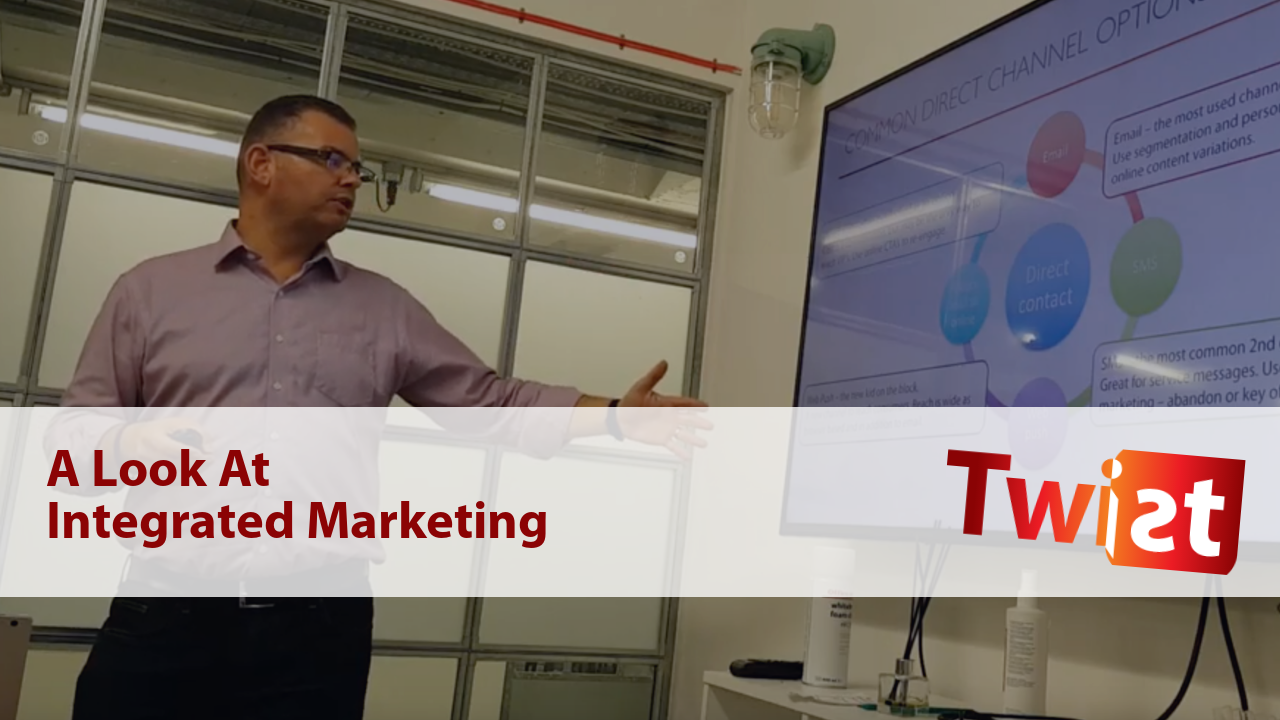Twist Blog

A Look At Integrated Marketing
Here’s a quick ‘behind the scenes’ look at a recent training session. Delivered as a part of course looking at how to ‘mature your marketing’, this final section is summary of some of the key topics covered. Which are your key channels and why?
Last week we started to look at integrated marketing.
We led with email because it’s the more mature channel. It tends to be where the focus, certainly for yourselves are, and who you’re talking to. But we recognise there are multiple ways for an individual to be able to interact with the business.
What we need to do is understand what the best channel is or what the best mix of channels might be and how do we need to interplay them?
We had the example where email and social are working together. It was a really good example where, when you’ve got an email signup, promote your social channels, so that those people who ‘like’ you, have friends that are are likely to ‘like’ you, and therefore they can amplify out your message across their social networks for you as well.
Likewise where you don’t have email, can you reach them socially and then make it really easy for them to sign up, rather than having to go and find your offers and news. You can send it directly to them. So get them to sign up for email from there (the social platform)
Therefore the two channels start to support each other.
We looked at ‘the multiplier effect’, where brand recall and recognition is far higher when you see it multiple times. This was the example from Thinkbox, where actually recalling a Sainsbury message was 4% successful with Twitter only, 8% successful for TV only, but 21% so a multiplication of recall where you’ve got multiple channels.
We looked at the most common direct channels we use across email, SMS, web push and direct mail (we included direct mail because there is a digital element to it, both in terms of print and the ability to bring people offline back online, through some fairly personalised approaches) and web push as a bit of a new kid. That’s where you sign up to the website, in the browser and it can send you messages through, even if you’re not on the website at that point.
In terms of the planning we looked at a creative delivery process, starting with the brief which is where you define what trying to do and why.
Then you go into your planning and discovery, which is all about meeting the brief.
What would we have to do?
What do we know?
What don’t we know?
That then leads into “this is the solution that we are now doing”. This balances cost, versus options, versus time, effectively looking at those three things.
Once you’ve got your solution buttoned down, then you move into creation & delivery. Then that way you get a nice clear run to the end, rather than looping back and wondering ‘What about this, and what about that?’ – With more and more stakeholders being involved, adding a bit of chaos into the delivery mix.
So ask yourself – are you effectively delivering integrated marketing in your business right now, or is your activity independent and so not cohesive?
Here at Twist, we are happy to take a look and create a planning approach to maximise reach and action through a joined marketing plan. Boosting your results by optimising the strengths and reducing the weaknesses of each chosen channel.




